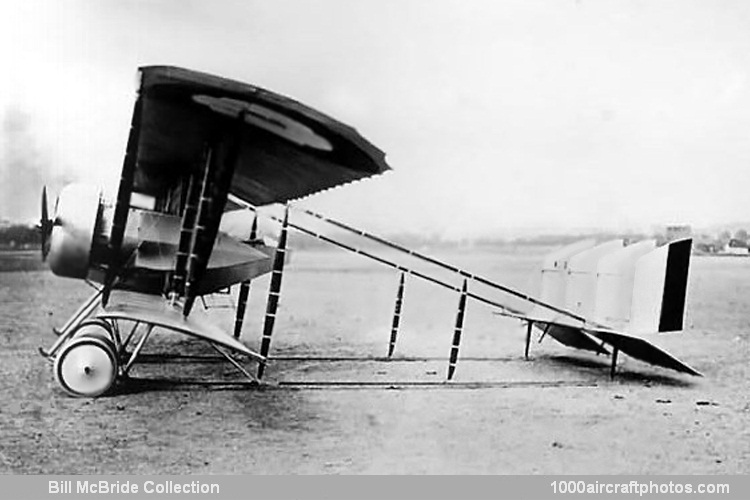The G.4s were used extensively for bombing raids over the German lines during 1916 and the first half of 1917, after which period they were handed over to training squadrons in a similar manner to the single-engine Caudrons. It was a slow and vulnerable type and stood little chance of escaping if attacked by German scouts. One of the chief drawbacks of the G.4 was the limited field of fire owing to the twin engines, short nose and complicated system of tail strut bracing. Nevertheless, by flying in close formations and concentrating fire on attacking aircraft they achieved to shoot down a few German scouts.
The 1,421 produced G.4s were mainly operated by the French AS, while the RNAS received 55, after mid-1917 a few were handed-over to squadrons of the American Expeditionary Forces for bombing training. Small numbers were operated by services of other countries: Belgium, Colombia, Finland, Italy, Portugal, Romania, Russia, and Venezuela.
Manufacturers: Caudron Frères at Rue (Somme), France, and sub-contractor British Caudron at Cricklewood, London, UK.
Type: Two-seat reconnaissance and day-bombing aircraft.
Power plant: Two 80 hp Le Rhóne rotary engines (cowled); maximum output (each) 84 hp at 1,200 rpm at sea level. British built aircraft had two 100 hp Anzani engines (uncowled).
Wings: Wooden main spars and ribs, wire-braced internally and externally; fabric covering. Warp system of control.
Nacelle: Wooden structure, plywood and fabric covering. Wire-braced wooden tail-boom.
Tail unit: Wooden framework, fabric covering. Two warp elevators and four rudders.
Landing gear: Wooden structure, wire-braced.
Span: 56 ft 5 in (17.20 m)
Length: 23 ft 6 in (7.16 m)
Height: 8 ft 5 in (2.57 m)
Wing area: 427.5 sq.ft (39.62 sq.m)
Empty weight: 1,870 lb (848 kg)
Loaded weight: 2,970 lb (1,347 kg)
Wing loading: 6.9 lb/sq.ft (33.69 kg/sq.m)
Power loading: 18 lb/hp (8.16 kg/hp)
Max speed at 6,500 ft (1,981 m): 82 mph (132 kmh)
Max speed at 10,000 ft (3,048 m): 80 mph (129 kmh)
Climb to 6,500 ft (1,981 m): 17 min
Climb to 10,000 ft (3,048 m): 33 min
Service ceiling: 14,000 ft (4,267 m)
Endurance: 3.5-4 hr
